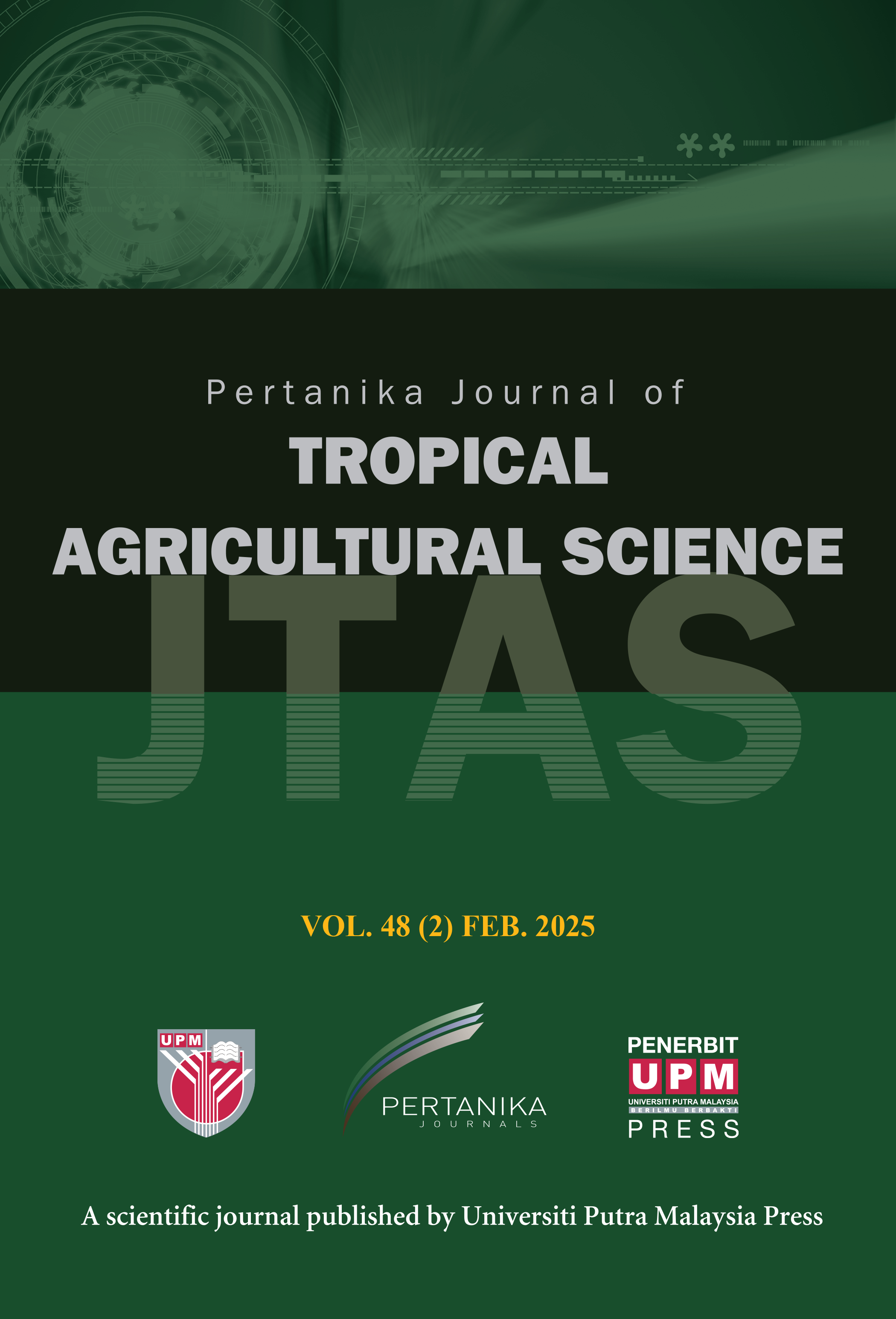PERTANIKA JOURNAL OF TROPICAL AGRICULTURAL SCIENCE
e-ISSN 2231-8542
ISSN 1511-3701
A Comprehensive Documentation of Orchid Species in Kedah, Malaysia
Azimah Abd Rahman, Farah Alia Nordin, Muhammad Wafiy Adli Ramli and Nurhafizul Abu Seri
Pertanika Journal of Tropical Agricultural Science, Pre-Press
DOI: https://doi.org/10.47836/pjtas.48.5.01
Keywords: Conservation, DNA barcoding, endemic species, habitat loss, limestone hills, orchid diversity
Published: 2025-08-07
The documentation of orchid species in Kedah, Malaysia, highlights a remarkable biodiversity characterized by 130 species spread across five subfamilies and 61 genera. Significant ecological areas like Gunung Jerai, Ulu Muda Forest Reserve, and Langkawi UNESCO Global Geopark serve as critical habitats, hosting rare and endemic species such as Paphiopedilum exul and Spathoglottis hardingiana. Advanced methodologies, including DNA barcoding and micromorphological analysis, have been utilized to enhance taxonomic precision and elucidate evolutionary relationships among these orchids. Despite these advances, orchid diversity in Kedah faces serious threats from habitat loss due to deforestation, climate change, and illegal poaching. These anthropogenic pressures underline the pressing need for effective conservation strategies. The study identifies limestone hills and montane forests as biodiversity hotspots that require urgent protection. By promoting sustainable practices and addressing habitat degradation, this research underscores the vital importance of integrated conservation strategies to safeguard the unique orchid flora of Kedah for future generations. Furthermore, it advocates for increased awareness, community involvement, and the establishment of a centralized database to facilitate ongoing research and conservation efforts. Ultimately, this documentation serves as a foundational resource for future taxonomic studies, ecological assessments, and biodiversity conservation initiatives, contributing to policy recommendations aimed at preserving and restoring Kedah’s rich orchid heritage.
ISSN 0128-7702
e-ISSN 2231-8534
Share this article
Recent Articles

